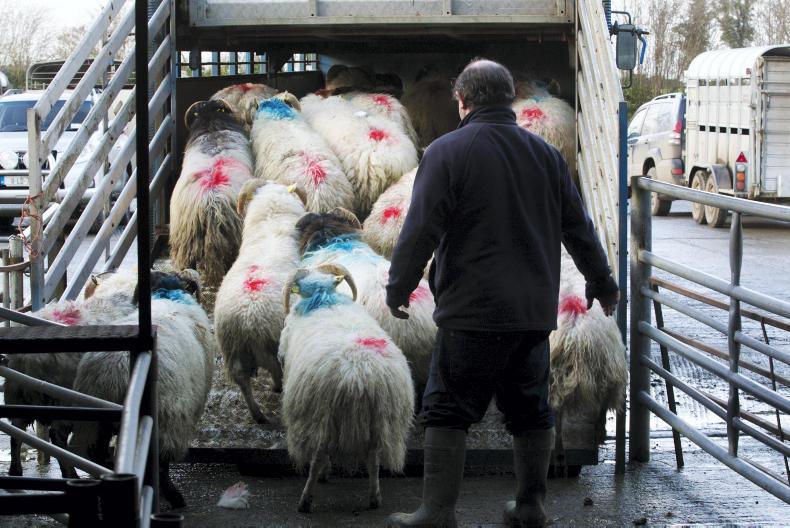
LOYALTY CODE:
The paper code cannot be redeemed when browsing in private/incognito mode. Please go to a normal browser window and enter the code there

LOYALTY CODE:
The paper code cannot be redeemed when browsing in private/incognito mode. Please go to a normal browser window and enter the code there
This content is copyright protected!
However, if you would like to share the information in this article, you may use the headline, summary and link below:
Title: Policy to ensure clean sheep
Following consultation with sheep industry stakeholders, the Department has released a clean livestock policy for sheep.
https://www.farmersjournal.ie/policy-to-ensure-clean-sheep-258738

ENTER YOUR LOYALTY CODE:
The reader loyalty code gives you full access to the site from when you enter it until the following Wednesday at 9pm. Find your unique code on the back page of Irish Country Living every week.

CODE ACCEPTED

You have full access to farmersjournal.ie on this browser until 9pm next Wednesday. Thank you for buying the paper and using the code.

CODE NOT VALID
Please try again or contact us.
For assistance, call 01 4199525
or email subs@farmersjournal.ie
Sign in

Incorrect details
Please try again or reset password
If would like to speak to a member of
our team, please call us on 01-4199525
Reset
password
Please enter your email address and we
will send you a link to reset your password

If would like to speak to a member of
our team, please call us on 01-4199525
Link sent to
your email
address
![]()
We have sent an email to your address.
Please click on the link in this email to reset
your password. If you can't find it in your inbox,
please check your spam folder. If you can't
find the email, please call us on 01-4199525.
![]()
Email address
not recognised
There is no subscription associated with this email
address. To read our subscriber-only content.
please subscribe or use the reader loyalty code.
If would like to speak to a member of
our team, please call us on 01-4199525
 This is a subscriber-only article
This is a subscriber-only article
Update Success !
The topic of cleanliness of sheep delivered for slaughter has come more under the spotlight in the last 18 months. The introduction of clipping charges by some plants has generated more discussion among producers while the Department of Agriculture cites a recent evaluation of sheep carcase hygiene in slaughter plants as being the driving force behind the need to develop a clean livestock policy (CLP) for sheep.
The Department has been engaged in a consultation process with industry stakeholders for some time and has now released a CLP for sheep. It aims to put measures in place that will significantly improve performance in relation to the cleanliness of incoming sheep to slaughter plants and, in doing so, safeguard Ireland’s export trade in meat and hides.
The policy, which the Department aims to progress with stakeholders on a continuous basis, follows a similar format to the policy in place for bovines. This includes classifying sheep delivered for slaughter into three categories – satisfactory, acceptable and unacceptable. These are rules that must be followed by the industry and are detailed below. Photographs to illustrate the three categories are unfortunately not available yet but making standard photographic examples available at the entry to the lairage of a slaughter plant is one of the recommendations highlighted for processors.
The policy recommends a list of steps or interventions for farmers, hauliers and processors which, it says, will minimise the potential for carcase contamination during slaughtering. Interestingly, in the case of category A animals, the policy says that no intervention is required other than the application of standard hygienic dressing procedures which calls into question producers being charged for clipping clean animals.
Clean livestock policy categories
Recommendations for farmers, processors and hauliers
The following are a number of steps listed in the policy for stakeholders to follow to minimise the potential for carcase contamination during sheep slaughter
The Department lists its role as coordinating the following:
Editorial: industry must work together
SHARING OPTIONS: